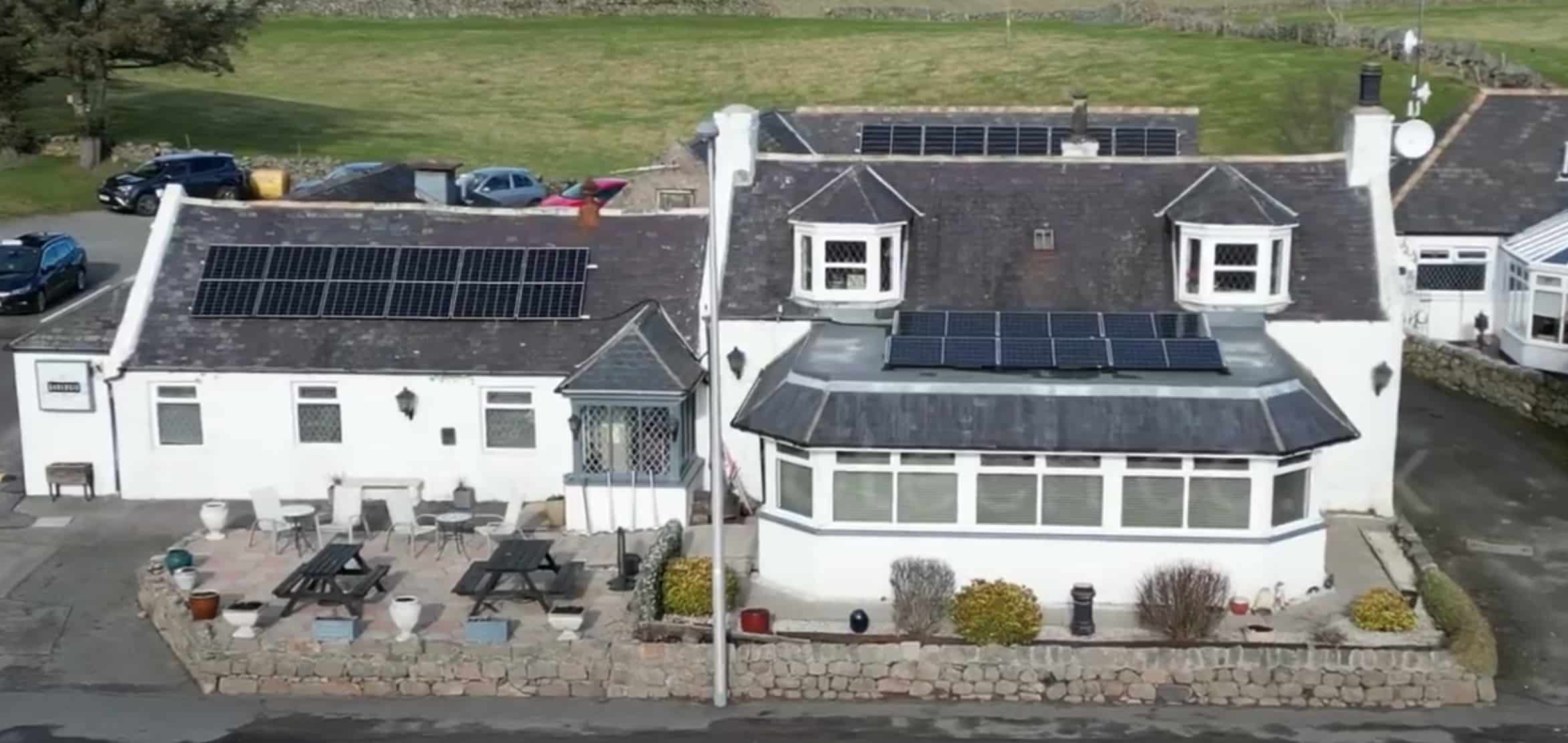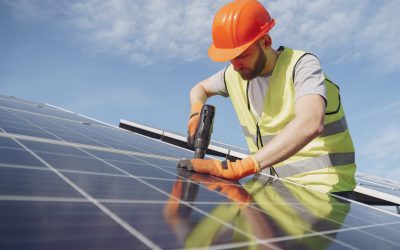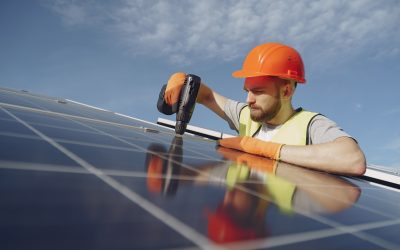Transitioning to solar energy involves a series of meticulously planned steps, beginning with an initial consultation and progressing through design, engineering, and the intricacies of obtaining necessary permits and documentation.
This guide, aimed at the UK market, aims to demystify these initial phases, providing a clear path for homeowners and businesses alike to embrace solar power.
Initial Consultation
The journey to solar energy begins with the Initial Consultation.
This crucial first step is about gaining a deep understanding of the client’s energy needs, financial goals, and the unique aspects of the proposed installation site. It’s a comprehensive evaluation, where solar experts employ a variety of tools and analyses to assess energy usage and site suitability.
The outcome is a bespoke installation plan tailored to meet specific objectives, optimising for efficiency and sustainability right from the start.
Get in touch with us to arrange a no-obligation consultation
A typical initial consultation for solar panel installation, whether for a home or business premises, involves several key components designed to ensure the solar solution meets your specific needs, budget, and property characteristics.
Your Energy Needs and Goals
The first part of the consultation will focus on understanding your current energy usage, your objectives for going solar (such as reducing energy bills or becoming more environmentally friendly), and your long-term energy needs.
This might involve looking at your past electricity bills and discussing any anticipated changes that could affect energy consumption.
Site Evaluation
A crucial step is evaluating your site to determine its suitability for solar panels.
This includes assessing the roof’s condition, orientation, and shading from trees or other buildings, which can affect the solar panels’ efficiency.
For businesses, this might also involve evaluating multiple buildings or structures. If the installation is planned for the ground, the available space and orientation are key factors.
Financial Assessment
The consultant will discuss the financial aspects of installing solar panels, including the upfront costs, available rebates and incentives, and expected return on investment (ROI).
Financing options may also be explored, such as leases, loans, or power purchase agreements (PPAs), depending on what the provider offers and what best fits your financial situation.
System Design Proposal
Based on the information gathered, the solar provider will propose a custom solar energy system design that meets your energy needs and fits your property.
This includes the type and number of solar panels, the inverter system, and any additional components like battery storage.
The proposal should detail the system’s capacity, estimated energy production, and how it will integrate with your current electrical system.
Quote and Economic Analysis
You should receive a detailed quote that includes the cost of equipment, installation, and projected savings on energy bills.
Additionally, an economic analysis showing the payback period, net savings over the life of the system, and the environmental impact (e.g., carbon emissions reduction) may be provided.
The consultant will discuss the next steps in the process, including timelines for design approval, installation, and grid connection. They will also cover any actions you need to take, such as securing financing or preparing the site for installation.
A consultation is a critical step in the solar installation process, offering a tailored solution designed to maximise your benefits from solar energy. It’s a comprehensive review that ensures you are fully informed and comfortable with the proposed solar project before moving forward.
Design and Engineering: Crafting the Blueprint
The Design and Engineering stage is where solar panel installation moves from concept to detailed planning. This phase is essential for transforming initial ideas into concrete, actionable blueprints that will guide the installation process.
During this stage, experts craft detailed system layouts and electrical schematics. The layout planning meticulously maps out the placement of each solar panel and related equipment to capture maximum solar energy. Simultaneously, electrical schematics are developed to outline how the panels, inverters, and other components will be interconnected, ensuring the system’s efficiency and safety.
A key focus is ensuring that the proposed solar energy system is optimized for energy production while adhering to all relevant building codes, electrical standards, and safety regulations. This means the design must not only be efficient in energy generation but also compliant with legal requirements, ensuring the system operates safely once implemented.
Additionally, the design process involves integrating the new solar system with the property’s existing electrical infrastructure. This ensures a seamless operation between the new and old energy systems, enhancing efficiency and reliability.
Achieving this balance requires a combination of technical precision and creative problem-solving. Designers and engineers often use advanced software and engineering calculations to model energy production and simulate various scenarios. They also need to creatively address site-specific challenges, such as unusual roof configurations or shading issues, to tailor a system that meets efficiency goals and integrates smoothly with the existing setup.
Permits and Documentation: Navigating Regulations
In the UK, the requirements for installing solar panels vary slightly across England, Scotland, Wales, and Northern Ireland, but generally, the process is streamlined to encourage renewable energy use.
England
For most domestic properties, solar panel installation is considered a “permitted development” and does not require planning permission, provided certain conditions are met. These include not installing panels above the highest part of the roof (excluding chimneys) and ensuring panels do not protrude more than 200mm from the roof surface.
Listed buildings and properties in conservation areas might have additional restrictions.
Scotland
Similarly, solar panels are often categorised as permitted developments in Scotland, which means planning permission is not usually needed. However, the rules slightly differ, such as restrictions on the installation on flat roofs and walls of blocks of flats, especially within conservation areas or on listed buildings.
It’s advisable to consult with local planning authorities for specific conditions.
Wales
The regulations align closely with those in England, where solar installations are typically permitted developments unless the property is listed or located within a conservation area.
Installers must ensure that the installation does not affect the property’s appearance significantly and must comply with building regulations regarding structural integrity.
Northern Ireland
The guidelines for Northern Ireland also follow the principle of permitted development for solar panel installations, with exceptions for listed buildings and properties in conservation areas.
It’s essential to ensure that any installation complies with local building regulations and does not negatively impact the building’s structure or aesthetics.
For all regions, regardless of specific local variations, it’s crucial to notify the Distribution Network Operator (DNO) about the installation, especially for systems with a capacity over 3.68kW. The DNO’s approval is necessary to ensure that the solar system can safely connect to the grid.
In all cases, while many installations fall under permitted development, it’s always a good practice to check with your local planning authority to confirm that your project complies with all relevant regulations and to ensure you don’t need planning permission.
This approach will help avoid any potential legal issues and ensure a smooth installation process.
NEXT STEPS
After Initial Consultation, Design and Engineering, Permit and Documentation has been completed the next stage is the Procurement of Materials, Installation, Inspection and Testing.
To get a high level understanding of the process see the solar panel installation overview.
Conclusion
It’s evident that the path to harnessing solar power, though intricate, is paved with opportunities for sustainability and energy independence.
From the initial consultation that tailors the project to your specific needs, through the meticulous design and engineering phase, to the careful navigation of permits and documentation, each step is crucial in ensuring the success and efficiency of your solar energy system.
This guide has aimed to demystify the solar panel installation process, providing clear insights into each phase for both homeowners and businesses. With the growing emphasis on renewable energy and the incentives available, solar power has never been more accessible.
The initial phases of consultation, design, and permitting set the stage for a smooth transition to the actual installation and beyond, highlighting the importance of thorough planning and professional guidance.
As we look forward to the procurement of materials, installation, inspection, testing, and eventually, the maintenance of your solar energy system, remember that the journey to solar energy is not just about installing panels but embracing a sustainable lifestyle.
Embarking on the solar panel installation process is a significant step towards reducing carbon footprints, harnessing clean energy, and achieving long-term savings on energy costs.
With the right preparation and partnership with experienced professionals, you can ensure that your solar project is a success, contributing to a greener future.
The future of energy is bright, and with solar power, you have the opportunity to be at the forefront of this transformative movement.

About Stuart Munro
Stuart Munro, Director of i-Protech Technology and i-Protech Renewables Ltd, has almost a decade of expertise with renewable energy. Stuart has solidified i-Protech’s stature as a leader in solar energy and battery storage solutions. His commitment to renewable technologies has not only advanced the company’s portfolio in electrical and security systems but also underscored his dedication to environmental stewardship.





